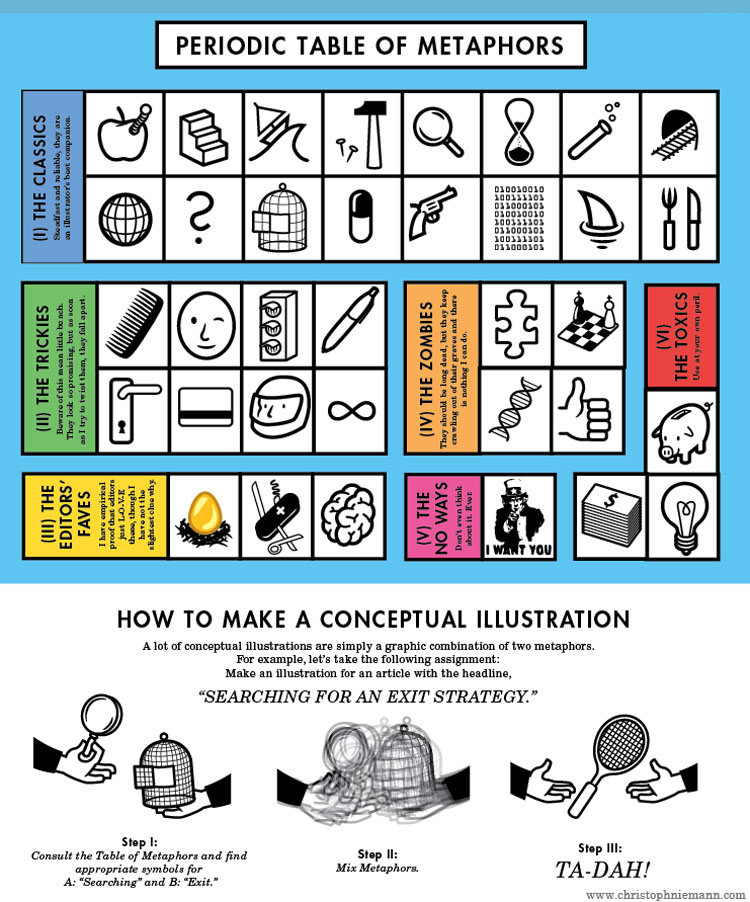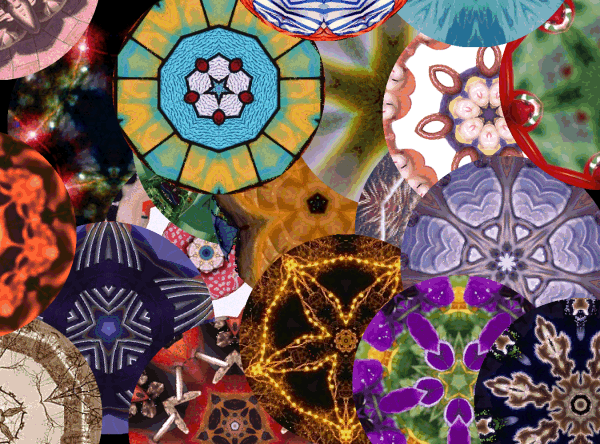Serendip is an independent site partnering with faculty at multiple colleges and universities around the world. Happy exploring!
Jamesian Imagery: The Metaphors of William James


One of the recurring themes of our class conversations about (and, in the language of Paul Grobstein, our conversations with) William James is our endless quest to unravel, translate, and otherwise puzzle through James' intentions and meanings. In order to unpack James a bit further, I have decided to choose a number of William's metaphors from the various texts of his we have read over the course of the semester. Not only will I post images that correspond to these metaphors in an effort to appeal to the visual learners of the world, but I will also discuss what James' images mean to his arguments, and post alternative metaphors (with corresponding images) that I think would illustrate James' points better (or, at least, differently). I will choose one metaphor from a number of James' writings that we have read this semester (except for "Philosophical Conceptions and Practical Results," for which I have already provided a metaphorical photo-essay in my commonplace book) and explore each metaphor visually, with alternative images and/or metaphors to describe the same argument, and make an effort to link the images with James' theories and arguments and question the root of his metaphors.
The first metaphor I will interrogate comes from James' Principles of Psychology, from the chapter simply entitled Habit. While this chapter gave me plenty of metaphors to consider, one such metaphor struck me as particularly interesting. "Each lapse is like the letting fall of a ball of string which one is carefully winding up; a single slip undoes more than a great many turns will wind again."(James) This quotation is in reference to the concept of replacing an unwanted habit with a new habit. While the metaphor is provided in reference to a Professor Bain's essay on steps one can take to replace a habit, the metaphor is James' own.
Here, we see an image I found online of a spool of twine that has been unwound. I have also included a painting by Van Gogh of a woman winding yarn. While it is difficult to capture in a single image the time-consuming nature of having to wind a ball of yarn or string that has been dropped or otherwise unwound, I am sure that most people have taken part in this frustrating activity at least once. It is fairly clear that the emotion that James is trying to capture in this notion of a dropped ball of string and the time and energy needed to re-wind the string is that of frustration mingled with dedication. If a person is trying to replace a habit with another, and somehow slips in the process of ceasing the practice of the habit which they are trying to replace, they cannot simply return to the point at which they left off. They must literally rewind their progress and begin again. Another visual interpretation of this metaphor that came to my mind is the notion of climbing a tree. If a person is in the process of climbing a tree and suddenly (literally) slips, they will inevitably lose their grip, slide down a portion of the trunk, or perhaps fall to the ground altogether. They are therefore physically incapable of starting from where they left off, and need to completely begin the activity again. Additionally, there is much more energy and activity in climbing than there is in falling, despite how much the fall may hurt. James uses this metaphor of frustration, restarting and commitment to communicate the necessity for dedication in the situation of creating new habits.

The next metaphor I will address comes from James' Principles of Psychology: Stream of Thought. While it seems obvious which metaphor I will interrogate, as there is one inherent in the chapter's title, I have chosen a different metaphor. "As in a kaleidoscope revolving...the figures are always rearranging themselves... "(James) I am very much interested in this notion of the brain and its thoughts rearranging themselves constantly. What I deeply appreciate about this metaphor is that it encapsulates precisely what James is arguing about thought. The image that the eye sees from a revolving kaleidoscope is not only beautiful and random, but can also never be duplicated. Thoughts are precisely the same. However interesting, rare, or beautiful a thought is, one can never have the exact same thought again.

Another metaphor that I feel would be just as apt in describing James' argument about the nature of thoughts and the human brain is the notion of the completely unique snowflake. Other alternatives came to mind, like the notion of fingerprints, but the desire to return to the identical thought led me to thinking about snowflakes and the ability to catch multiple snowflakes in a person's lifetime. Despite how hard a person may try, they will never catch the same snowflake twice, nor will they view the same kaleidoscopic image, nor will they have the exact same thought as they have had before (or of another person's). The brain, the kaleidoscope, and the clouds are in states of constant motion and manipulation from outside influences, therefore rendering each second's output unique.



The final metaphor I will interrogate comes from James' delightful criticism of our beloved Bryn Mawr College, and therefore of institutions at large, The PhD Octopus. "The College had always gloried in a list of faculty members who bore the doctor's title, and to make a gap in the galaxy, and admit a common fox without a tail, would be a degradation impossible to be thought of."(James) This description of the institution as refusing to hire a perfectly qualified professorial candidate without the qualifying degree of a PhD set a fire under our class, especially as we are all (presumably) quick to defend the institution in question. However, leaving the conversation regarding standardized academia out of this paper, I want to focus on the "fox without a tail" metaphor. This notion comes from one of Aesop's fables, in which the fox loses his tail and tries to convince his fellow foxes to cut theirs off (in order to save himself from embarrassment and lonely misery). However, James' use of this principle is strange. It is clear that he is trying to describe the professor-without-a-PhD as a professor without his most defining characteristic (as a fox without a tail can almost cease to be considered a fox). However, tailless foxes are not at all common, as exemplified by how difficult it was to find an image of one.

I find that, while James seems to be mocking the College's required PhD by describing the professor in question as a fox without the characteristic that makes him a fox, there is an easier metaphor to be used for this situation without the Aesopian undertones. Many metaphors have been used throughout literature and history to describe strange and/or particularly special circumstances that involve something without its defining characteristic, such as a rose without a thorn or a shepherd without his sheep. The one I choose to use, however, is a snail... 
...Without its shell. 
A snail without its shell is still a snail, just as a fox without its tail is still a fox, however less impressive or definable these creatures may be without these characteristics. However, shell-less snails (or slugs, as they are more commonly called*) are not nearly as rare as tailless foxes, and are therefore (for me) a much more acceptable metaphor for those without PhDs.
I will miss William James more than I have missed his siblings, I feel. I find William giving our class more material with which to work, more to unpack, more to puzzle over. For example, I just wrote a photo-essay about William's metaphors alone, which I do not feel I could have accomplished with the writings of Henry or Alice. William's approach to the world is one that I can understand and appreciate, insofar as I approach the world in this manner myself. I appreciate his humor, his seemingly boundless talent for inquisition and theorizing, and his clear and abundant gift for choosing the right metaphor.

*Seriously, snails without shells are actually slugs. I was under the impression that these creatures are completely different, but Wikipedia has proved me wrong.



Comments
Playing in the candy store of metaphor
exsoloadsolem--
First: beware relying on Wikipedia for "proof"!
Second: your essay functions as a great commentary on, and compliment to, Calamity's send-up of William James in the "metaphor shop." While she shows him excitedly buying up metaphors, "like a kid in a candy store," you sink into a series of them, unpacking their resonances--and then extending each w/ an (improved? more precise?) one of your own.
What delights me most about this exercise is its attentiveness to the quirkiness of James's language. A number of your classmates were so put off by his magisterial portentousness, his philosophical advice-giving, that they couldn't quite hear what he was saying. Certainly what I learned, from their resistance, is how hard it is to shift a course from a "literary" to a "philosophical" mode of writing. By taking time here to "unwind the string" of James's images, looking @ their "revolving" rearrangements, chasing their "tails," you make his work more inviting and more accessible, as both a literarily philosophical text and a philosophically literary one.
What you don't do, though, is place these images, as beads on a string, in relation to one another; your essay has no transitions, no connections linking one metaphor to the next; it operates, actually, much like the random selection that occurs in Calamity's "candy store." The series I catalog above--unwinding string, revolving arrangements, chasing tails--begins to play w/ some possible connections, constructing a logical sequence among them. Might you go on in this direction?